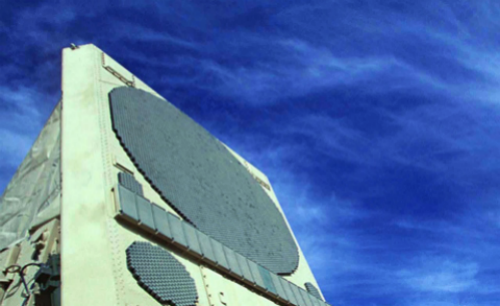| |
 |
| |
|
|
|
|
|
| |
|
What is ENEPIG in High Frequency PCB ? |
|
|
|
| |
|
1. Process Principle of ENEPIG |
|
|
|
| |
|
Nowadays,the ENEPIG (Electroless Nickel Electroless Palladium Immersion Gold) technique has become the preferred surface treatment for PCBs in high-end electronic devices due to its ability to ensure high-quality signal transmission and stability.
The ENEPIG process involves several steps: first, the copper surface is cleaned to remove contaminants, followed by electroless nickel plating, which forms a nickel layer 3-6 microns thick to prevent copper diffusion and provide a foundation for the subsequent palladium and gold layers. Next, a palladium layer 0.05-0.2 microns thick is deposited to protect the nickel layer and prepare for the gold immersion step. Finally, gold immersion results in a gold layer 0.03-0.1 microns thick, primarily serving to prevent oxidation and provide good solderability. |
|
|
| |
|
|
|
|
| |
|
2. Merits of ENEPIG |
|
|
| |
|
2.1 Excellent solderability:
The gold layer ensures high-quality solder joints, enhancing soldering reliability and reducing signal interruptions.
2.2 Outstanding corrosion resistance:
The palladium layer effectively protects the nickel layer, improving corrosion resistance and making it suitable for harsh environments.
2.3 Good wire bonding performance:
ENEPIG is compatible with both gold and aluminum wire bonding, meeting various assembly requirements.
2.4 Low contact resistance:
The multilayer structure reduces signal loss, making it ideal for RF and microwave applications. |
|
|
| |
|
|
|
|
| |
|
3. Limitations of ENEPIG |
|
|
| |
|
3.1 High cost: The use of precious metals like palladium and the complexity of the process lead to increased costs.
3.2 Complex manufacturing process: The multi-step process requires strict parameter control, adding to production difficulty.
3.3 Limited supply: Not all manufacturers possess the capability and equipment to produce ENEPIG, which may lead to supply issues. |
|
|
| |
|
|
|
|
| |
|
4. Description of Rogers RT/duroid® 6002 Laminate |
|
|
| |
|
The ENEPIG technique is widely used in Rogers' high-frequency laminates. Now we can take Rogers RT/duroid® 6002 for example.
RT/Duroid 6002, a ceramic-filled PTFE material, was the first laminate to deliver low loss and low dielectric constant, providing excellent electrical and mechanical properties essential for designing complex microwave structures. The ENEPIG process can further enhance surface flatness and solderability, ensuring reliable electrical connections even at small pitch solder joints. This effectively reduces contact resistance during signal transmission, thereby improving the overall performance of the circuit. Presently, we'll unveil the mystery of RT/duroid® 6002. |
|
|
| |
|
|
|
|
| |
|
4-1. RT/duroid 6002 Datasheet
Feature |
Specification |
Benefit |
Dielectric Constant (Dk) |
2.94 +/- 0.04 |
Consistent signal propagation |
Low Thermal Coefficient of Dk |
12 ppm/°C |
Stable across temperatures |
Dissipation Factor |
0.0012 at 10GHz |
Minimal signal loss for high - freq apps |
Thermal Conductivity |
0.6 W/m/k |
Good heat dissipation |
Z - axis Coefficient of Thermal Expansion |
24 ppm/°C |
Excellent dimensional stability |
Moisture Absorption |
0.02% |
High durability and longevity |
|
|
|
| |
|
|
|
|
| |
|
4.1 Advantages of RT/duroid 6002 PCB |
|
|
| |
|
Low Loss Performance:
The laminate ensures outstanding high-frequency signal integrity with low loss.
Tight Thickness Control:
Precise thickness control enhances manufacturing accuracy for complex PCB designs.
Dimensional Stability:
The laminate provides distinguished mechanical and electrical characteristics, guaranteeing dependable multi-layer board construction.
Temperature Sensitivity:
Its in-plane expansion coefficient matches copper, providing ideal thermal stability for temperature-sensitive applications.
Out-Gassing Resistance:
Its low out-gassing characteristics render it appropriate for space applications where off-gassing is of utmost importance. |
|
|
| |
|
|
|
|
| |
|
4.2 Diversified Applications |
|
|
| |
|
Rogers RT/duroid 6002 has typical applications including various antennas, radar systems, power backplanes, multilayer circuits, collision avoidance, and beam forming networks, showing its wide use in key fields to meet specific performance needs. |
|
|
| |
|
|
|
|
| |
|
 |
|
|
| |
|
|
|
|
| |
|
5. Conclusion |
|
|
| |
|
" For high-frequency PCBs, the ENEPIG process is like a loyal guard, protecting the stability and efficiency of signal transmission and escorting the excellent performance of electronic devices." The ENEPIG process, with its outstanding advantages like excellent solderability, remarkable corrosion resistance, good wire bonding performance and low contact resistivity, holds a promising application prospect in high-frequency PCBs. |
|
|
| |
|
|
|
|
| |
|
Founded in 2003, Shenzhen Bicheng Electronics Technology Co., Ltd is an established high frequency PCB supplier and exporter in Shenzhen, China, serving customers worldwide.
We are devoted to delivering high-frequency PCB products and solutions of the highest quality, along with exceptional service. Feel free to consult and contant at any time ! |
|
|
| |
|
|
|
|
| |
|
|
|
|
| |
|
|
|
|
| |
|
|
|
| |
|
|
|
| |
|
|
|
|
|